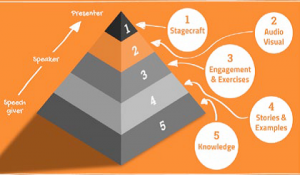Priorities
People, money, and time are finite. There are always more things to do than there is people, money, and time to do them. Setting priorities is a balancing act. It should give you a list of tasks in the order in which they should be attempted. Setting priorities will help you manage the expectations of all of your stakeholders – your staff, your managers, and your customers.
Setting priorities is a subjective process generally based on consideration of two key attributes – importance and urgency. By themselves, neither importance nor urgency are determinants of a task’s relative priority:
- Resources for more urgent tasks are used before resources for less urgent tasks areused
- Resources for more important tasks will be scheduled before resources for less important tasks are scheduled.
Urgency
Urgency should be an objective attribute so it should be able to be reasonably accurately determined by considering answers to the following questions:
- Is the situation trending worse or better?
- When does this task need to be completed?
- How much effort is required to complete it?
- Therefore, when does work need to start?
Importance
Importance is a subjective attribute so it resides in the eyes of the beholder. It can be determined by considering the answers to questions such as:
- What are the worst things that could happen if this task is not completed?
- What are the best things that could happen if this task is completed?
- Who is the customer for this task?
If you are unsure, talking to your trusted colleagues is a great option.
How to set priorities?
You may wish to visualise the priority setting process by plotting your tasks on a 2×2 Cartesian Grid, with increasing importance on the y-axis and increasing urgency on the x-axis. You can put as many levels of importance and urgency as you like into the grid – but the more you put in, the more complex the priority setting process becomes. So you may wish to start simply.
The following general process will help you set priorities:
- Jot down working definitions of high, medium and low importance and high, medium and low urgency
- List all your tasks, with the importance, urgency and therefore absolute priority of each one – sort the list from P1 to P5 – this is a snap in a spreadsheet
- Within each absolute priority grouping (for example, P3), and manually sort each into their relative priority using the time each task needs to start as the discriminator
- Schedule resources for P1 tasks, then P2 tasks, then P3 tasks and so on
- Check that the priority list makes sense – firstly to you and then to your stakeholders
- Then start working according to your schedule.
 Our Community published this short piece of advice about public speaking from Hootville Communications head honcho Brett de Hoedt in its latest Our Community Matters ezine:
Our Community published this short piece of advice about public speaking from Hootville Communications head honcho Brett de Hoedt in its latest Our Community Matters ezine:





 Interesting project management perspective from comedian Tina Fey – striving for perfection should not get in the way of delivering on time and on budget. “The show doesn’t go on because it’s ready; it goes on because it’s 11:30!”
Interesting project management perspective from comedian Tina Fey – striving for perfection should not get in the way of delivering on time and on budget. “The show doesn’t go on because it’s ready; it goes on because it’s 11:30!”